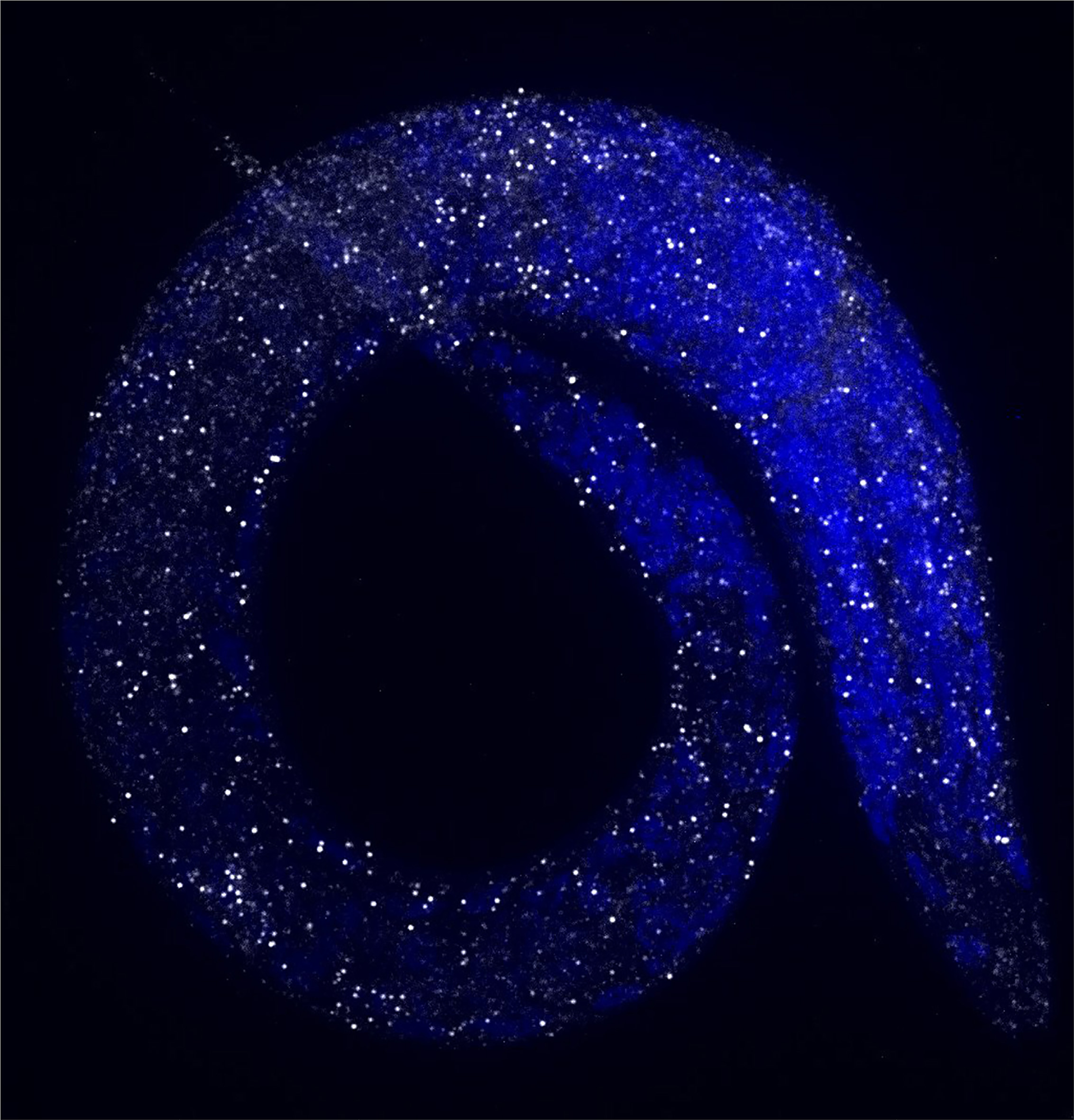Carpenter Lab
 Chromatin states regulate transcriptional access to DNA, and are mediated by modifications,
like methylation, that can be added or removed by histone modifying enzymes. Recent
work has shown that histone methylation can be maintained through cell divisions and
acts as a type of transcriptional “memory.” In the Carpenter lab, we use the super
cool nematode, Caenorhabditis elegans, to study how these cellular memories are inherited between generations. As a postdoc,
I discovered a novel mechanism by which maternally deposited histone modifying enzymes
antagonize one another to balance inherited histone methylation - a balance that when
tipped leads to ectopic expression of germline genes in somatic tissues and severe
consequences for development (See germline gene (grey dots) expressed throughout entire somatic tissues of a C.
elegans larva in the above image!!!). The histone modifying enzymes that I study in C. elegans are highly conserved in vertebrates so students who join my lab will be trained in
classical and cutting-edge techniques as they investigate broad principles of epigenetic
inheritance that instruct healthy development and are associated with human disease.
Chromatin states regulate transcriptional access to DNA, and are mediated by modifications,
like methylation, that can be added or removed by histone modifying enzymes. Recent
work has shown that histone methylation can be maintained through cell divisions and
acts as a type of transcriptional “memory.” In the Carpenter lab, we use the super
cool nematode, Caenorhabditis elegans, to study how these cellular memories are inherited between generations. As a postdoc,
I discovered a novel mechanism by which maternally deposited histone modifying enzymes
antagonize one another to balance inherited histone methylation - a balance that when
tipped leads to ectopic expression of germline genes in somatic tissues and severe
consequences for development (See germline gene (grey dots) expressed throughout entire somatic tissues of a C.
elegans larva in the above image!!!). The histone modifying enzymes that I study in C. elegans are highly conserved in vertebrates so students who join my lab will be trained in
classical and cutting-edge techniques as they investigate broad principles of epigenetic
inheritance that instruct healthy development and are associated with human disease.









